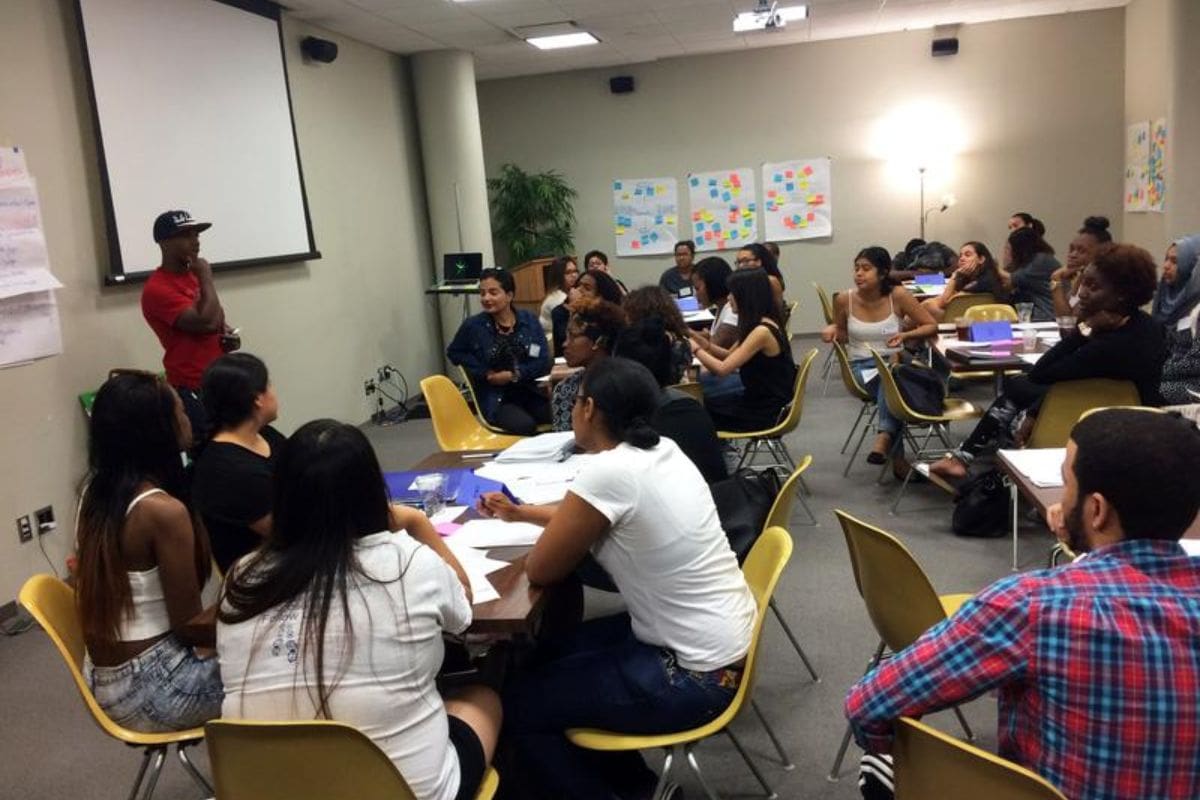Expanding Access to Enhance Eligibility: In a recent panel discussion focusing on enhancing eligibility for California students seeking admission to 4-year colleges, the conversation revolved around the vital role of meeting A-G requirements. The panelists underscored the significance of college preparatory courses in equipping students for higher education success.
However, the discourse also shed light on the challenges faced by high school students in accessing these essential courses and the struggles schools encounter in offering a full spectrum of A-G options.
Stay tuned as we deeper into the systemic changes needed to promote equity in education and expand opportunities for all California students.
Panelists Discussing A-G Requirements
During the roundtable discussion on A-G requirements, panelists emphasized the critical role of setting high expectations and providing robust support systems to ensure students’ successful completion. Sherrie Reed Bennett and other experts underscored the significance of creating a culture that fosters academic achievement and instills in students the belief that they are capable of meeting these rigorous standards. The focus was on not only increasing awareness of the A-G requirements but also on implementing targeted interventions to assist students in navigating and fulfilling these criteria.
Panelists stressed the need for early identification of students at risk of falling behind and the importance of tailored interventions to address their specific needs. By offering personalized support, such as tutoring, counseling, and academic planning, schools can better equip students to succeed in meeting the A-G requirements. Moreover, the discussion highlighted the role of partnerships between schools, families, and communities in creating a cohesive support network that propels students towards successful completion of these college preparatory courses.
Importance of College Prep Courses
Emphasizing the pivotal role of college prep courses in shaping students’ academic trajectory, panelists underscore the necessity of expanding access to these rigorous curricula to enhance post-graduation prospects. By providing more options for students and increasing the availability of college prep courses, students are better equipped to meet the requirements for admission to 4-year colleges.
The panel discussion highlighted the critical need for awareness initiatives that begin well before high school. These initiatives aim to cultivate a college and career culture among students, emphasizing the importance of early exposure to college preparation.
Through a structured approach to course selection and academic rigor, students are better prepared for the demands of higher education and the workforce. Ultimately, the significance of college prep courses lies in their ability to not only meet admission standards but also in equipping students with the necessary skills and knowledge for success in their post-graduation endeavors.
Challenges Faced by High School Students
High school students encounter significant challenges in meeting A-G requirements due to a lack of adequate support and awareness about these essential criteria. Despite the paramount importance of fulfilling A-G requirements, many students and their parents are often uninformed about these prerequisites, leading to difficulties in navigating the system effectively. This lack of awareness can result in students either delaying or failing to complete the necessary A-G coursework, ultimately hindering their eligibility for admission to four-year colleges.
Moreover, the complexity of the A-G requirements themselves poses a challenge to high school students. The breadth of courses needed to fulfill these criteria can be overwhelming, especially for students who may already be balancing demanding academic schedules alongside extracurricular activities and personal responsibilities. As a result, many students find it challenging to consistently meet the rigorous standards set by the A-G requirements, further exacerbating the barriers they face in accessing higher education opportunities.
Struggles of Schools in Offering A-G Courses
Amid the educational landscape, schools encounter various challenges in effectively offering A-G coursework to students striving to fulfill college eligibility criteria. Some institutions struggle to provide a comprehensive range of A-G courses, leading to disparities in access for students. Statistics indicate that a notable percentage of schools either do not offer any A-G classes or only present a limited selection. This limitation hinders students from completing the necessary coursework to meet college entrance requirements, thereby impeding their academic advancement.
| Challenge | Description | Impact |
|---|---|---|
| Limited Course Offerings | Some schools offer few or no A-G courses, limiting students’ ability to fulfill college criteria. | Reduced college eligibility for students |
| Conflicts with Career Technical Education (CTE) | Balancing A-G requirements with CTE courses poses challenges, potentially limiting course options. | Decreased diversity in students’ academic paths |
| Resource Constraints | Insufficient resources can hinder schools from expanding A-G offerings, impacting student access. | Inequitable educational opportunities for students |
Systemic Changes and Equity in Education
In addressing the imperative need for systemic changes and equity in education, a comprehensive examination of the barriers hindering students, particularly underrepresented groups, from meeting A-G course requirements is essential.
The panelists underscore the necessity of systemic changes at the district and potentially statewide levels to tackle the complex issue of A-G completion. Specifically, the discussion equity concerns, highlighting systemic obstacles that disproportionately affect student populations like African American and Latino students, impeding their eligibility for four-year universities.
Successful equity initiatives, such as the Heritage program, serve as models for effecting positive systemic transformations. The discourse culminates in recommendations for policy interventions aimed at ensuring that all students, regardless of background, have equal access to A-G coursework.
Also Read: Southern California School Faces Walkout Amid Alleged Antisemitic Incidents
News In Brief
Panelists stress the importance of meeting A-G requirements to enhance eligibility for California students seeking admission to 4-year colleges. Challenges include a lack of support and awareness, hindering students from completing essential coursework. Schools struggle to offer a comprehensive range of A-G courses, limiting access for students. The discourse highlights the need for systemic changes and equity in education to address disparities. Recommendations include early identification of at-risk students and partnerships between schools, families, and communities. Initiatives like the Heritage program serve as models for promoting equity. Stay tuned for updates on efforts to expand opportunities for all California students.
Our Reader’s Queries
How many California students go to college?
Approximately 60% of Californians immediately pursue college after high school. Recent statistics reveal that slightly over 62% of the 435,000 students graduating from high school in spring 2020 enrolled in college within 12 months, a decrease from the recent peak of 67% in 2017–18.
How many public 4 year universities are in California?
California boasts more than 30 four-year public colleges, with precisely 23 institutions being integral members of the California State University system.
What are the 4 types of colleges in California?
California features four primary college systems, namely: Community College (CCC), California State University (CSU), the University of California (UC), and Independent Private Colleges and Universities.
Is California expensive for college students?
However, California proves to be costly even when compared to the national average. As per the California Student Aid Commission (CSAC), living expenses, encompassing everything except tuition, currently exceed $2,900 per month for students covering the highest average costs.




